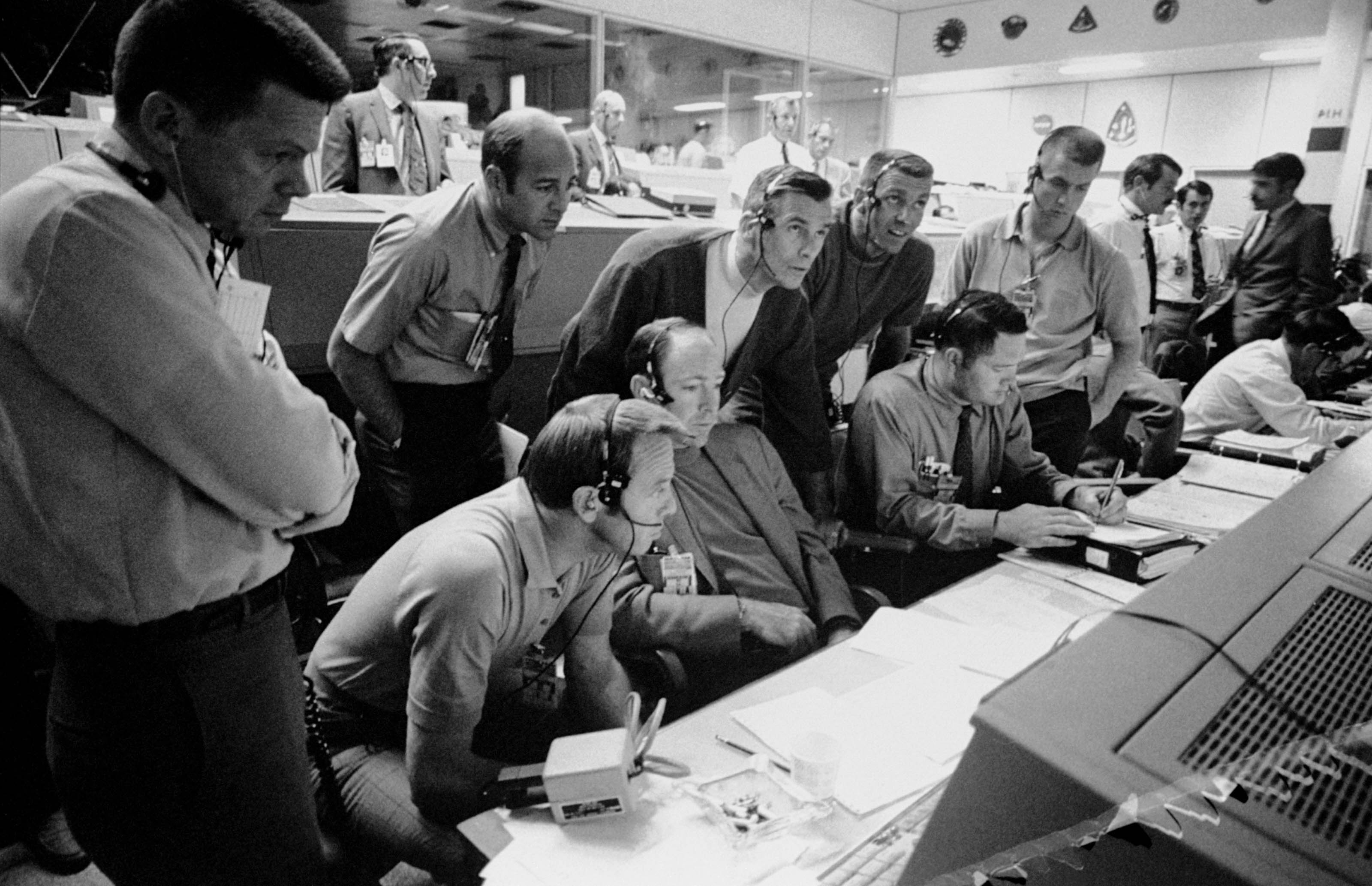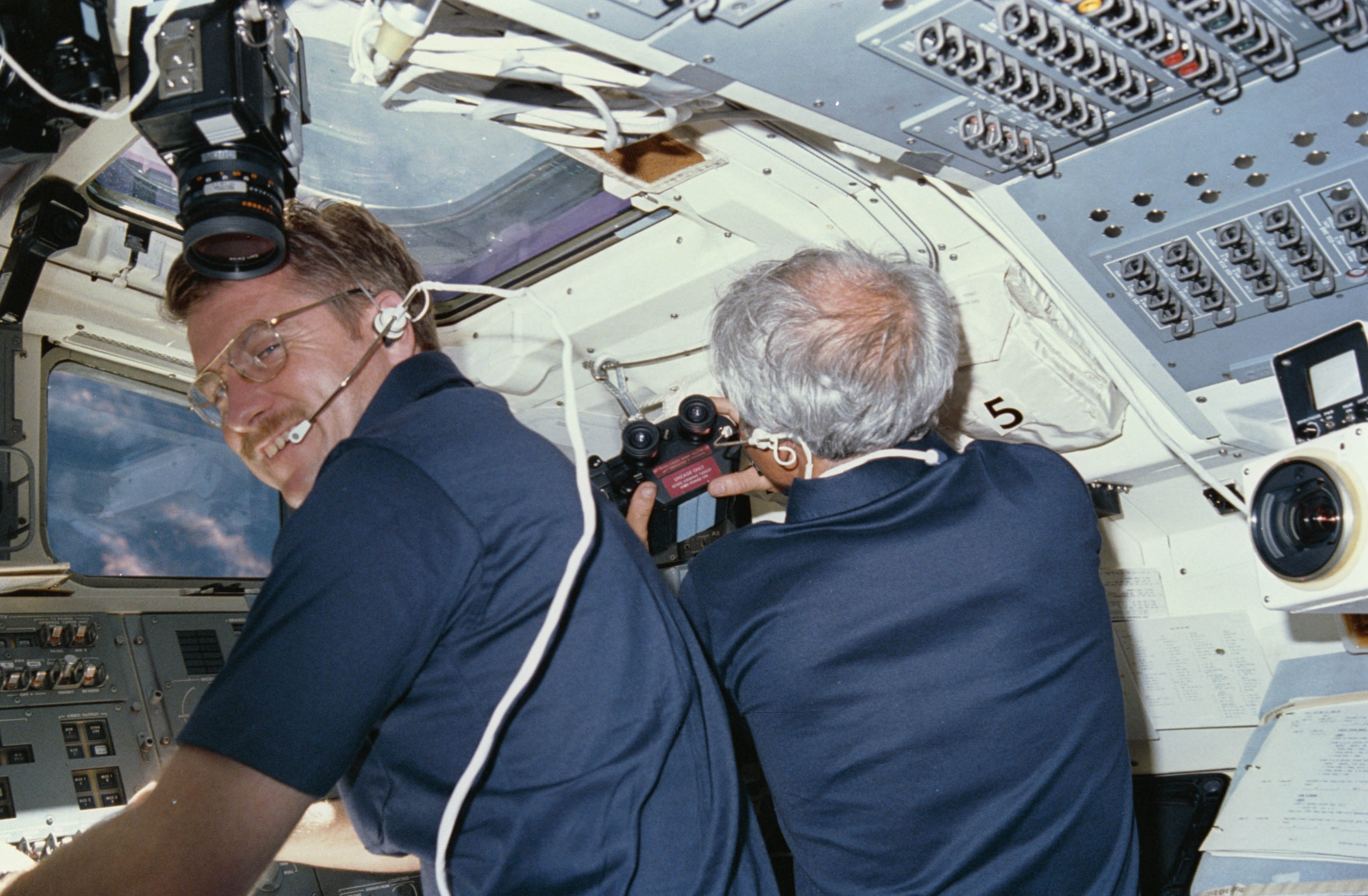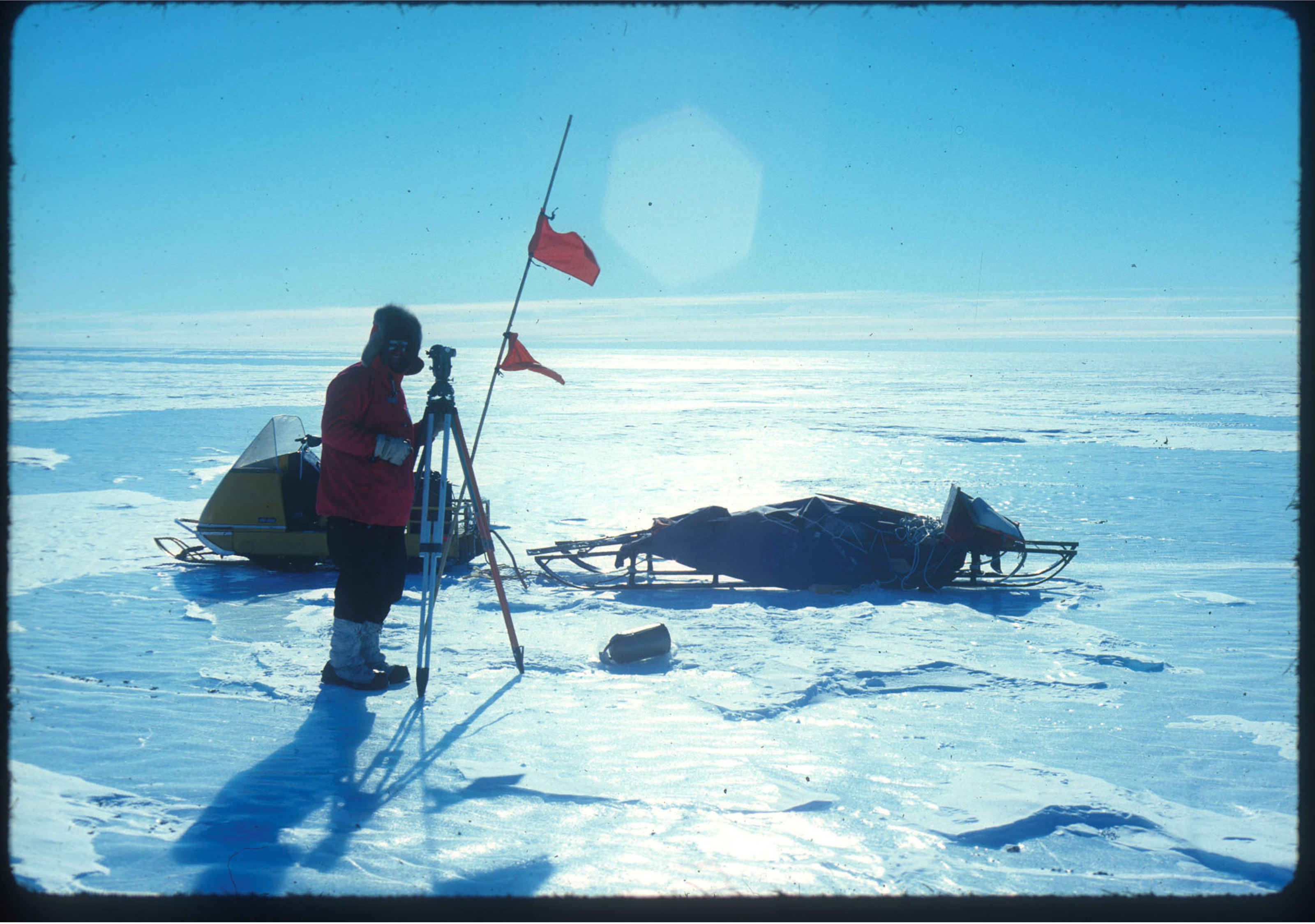
Did you know Tony was an astronaut? It's no doubt the piece of surprising trivia people most often share about former CECS Dean Tony England — and for good reason. England did two stints at NASA, which included spending eight days on Space Shuttle Challenger and serving on the support team that safely brought home the Apollo 13 astronauts. The funny thing about the whole astronaut thing is that it often made England feel sort of awkward: “People often really don’t know what to ask, and I felt like I never knew what they wanted to hear and didn’t want to bore them,” England shared in a 2019 interview. Except for kids. “Kids are honest — they always want to know how you go to the bathroom in space,” he says.
It's also possible that people’s fascination with England’s NASA experience led to many lost opportunities to chat with him about all the other remarkable things he’s done during his life. In the 1970s, he personally piloted aerial missions for the U.S. Geological Survey on temperamental single engine airplanes. He traversed both the Arctic and Antarctic glaciers by snowmobile in the days before GPS. And, like so many in the UM-Dearborn community, he was the first person in his family to earn a college degree. Below, we’ve recapped just some of the highlights of England's extraordinary life, ahead of Friday’s formal ceremony to rename the Engineering Lab Building in his honor.
Early life
Tony England embodies the University of Michigan-Dearborn ethos that a great life can spring from humble beginnings. England was born in 1942 in Indianapolis and, at age 12, moved with his family to West Fargo, North Dakota, a small town where the high school graduating classes rarely topped 60 students. A self-described “troublemaker” in his early years, England didn’t get serious about school until the 7th grade, when he discovered his love of math and science. He graduated from high school a year early and set his sights on becoming the first person in his family to earn a college degree. When a friend bet him that no kid from West Fargo who’d skipped a year of school could get into an elite university, he applied to Harvard and MIT, with North Dakota State as his backup. He got into all three and accepted the full scholarship to MIT. “That first year, I figured I took one evening off every six weeks to go to a movie, because I was playing catch-up with my fellow students, who had mostly attended elite high schools,” England remembers. But his determination paid off. England earned his undergraduate degree in earth sciences from MIT and ended up staying for a master’s and Ph.D. in geology and geophysics, where his dissertation focused on remote techniques for exploring the interior of the moon.
The NASA years
England’s area of study proved to be a fortuitous choice in the 1960s: His expertise in planetary geology and geophysics was just the kind of scientific background NASA was looking for as the agency planned an ambitious series of exploratory missions of the moon. He joined the Apollo program as a scientist-astronaut in 1967, and was, at age 25, the youngest astronaut selected by NASA at that time. England served as a mission scientist on multiple Apollo missions, but he earned his place in history while serving on the support team for Apollo 13. The mission was supposed to be the third lunar landing attempt, but on its third day, an explosion in one of the oxygen tanks compromised the crew’s supply of electricity, light, water and breathable air. Back on the ground in Houston, England was in the Mission Control Center when commander Jim Lovell’s now famous words came over the radio: “Houston, we’ve had a problem.” England and the other engineers scrambled to find a way to get the crippled spacecraft back home, and he was instrumental in designing an ad hoc CO2 scrubber, which would shore up the astronauts’ oxygen supply. England personally talked the astronauts through the process of building the device in space. All three astronauts survived, and England and the rest of the team received the Presidential Medal of Freedom in 1970.

England was scheduled to get his own space flight on Apollo 19, a mission in which he would pilot the lunar lander. But fears of another disaster, the public’s waning interest in moon exploration and NASA’s interest in developing the new shuttle program led to the cancellation of Apollo 18 and subsequent missions. England left NASA shortly thereafter and took a post at the U.S. Geological Survey, assuming he’d missed his chance to go to space. But in 1979, NASA lured him back with the second chance to get his flight. Initially, England served as a senior scientist-astronaut at the Johnson Space Center and eventually led the operation mission development group for the astronaut program, which oversaw scientific experiments performed on the shuttle missions. Then in the summer of 1985, England boarded the Space Shuttle Challenger for a mission focused on solar astronomy and plasma physics. After 126 orbits of the Earth and 188 hours in space, England returned, as many astronauts do, with a new perspective on the universe and our place in it. Of his time in space, England said:
“For human space flight, specifically, I think why we’re doing it is rooted in the question of whether humans have a future beyond the Earth. We are natural explorers, and if it’s possible and it’s interesting, we’ll want to try it. One of the things I felt after my eight days up there is that I was very comfortable. I was even sorry to have to come back down. For the first time, I had the feeling that this might be made to work. That is, I went up thinking of going to space more like it was going to the bottom of the ocean: We could arrange it, but I was acutely aware of all the things that needed to be managed for survival, and you certainly wouldn’t want to build a town down there. Still, the experience of being there was so surprisingly comfortable that I began to feel that, although I didn’t know how we would do it, we would ultimately find a solution. I came away believing that human space flight was really most profoundly an experiment on the human body.”

Adventures at USGS
Though England enjoyed his time at NASA, the complicated politics of the agency often interfered with his desire to “just do the science.” Between his two tenures at NASA, he found a home at the U.S. Geological Survey, where he returned to his roots in geology and geophysics. Though the USGS lacked NASA’s flashy reputation, England’s missions were no less adventurous. One of the skills he had picked up during his astronaut training was, of course, flying planes, and he quickly put that training to use at USGS. In the early 1970s, he flew missions all over the United States focused on remote sensing of soil moisture from the air. At that time, scientists were beginning to understand that soil moisture had a surprisingly profound impact on the weather, and England’s instruments and field work fueled more accurate weather forecasting and helped lay the groundwork for the satellite-based technology used today. The planes issued to the USGS, which he personally flew, weren’t the top-of-the-line military aircraft of his NASA days. He remembers their de Havilland Otter, in particular, burned so much oil its range was “limited more by oil than by fuel.” “I used to hold a mirror out the cockpit window and see how much oil was splattered on the side of the plane and that would tell me when it was time to land,” England remembers. During his subsequent USGS missions to Antarctica, the agency didn’t issue England a plane. Instead, he had to make his way across the mountains and glaciers by snowmobile and snowshoes, navigating in those pre-GPS days using the sun, much like 18th-century sailors. There, England again put his expertise in geophysics to good use, mapping rare mineral deposits that were located beneath a kilometer of ice using ground-penetrating radar. One of the mountains in the region where he worked now bears the name England Peak.

A “perfect fit” in academia
In addition to space exploration, NASA’s astronaut-scientists had public relations duties, and during one of England’s many talks around the country as an ambassador for the agency, he found himself at the University of Michigan in Ann Arbor. After the talk, he chatted with one of the professors in the College of Engineering, who had taken notice of the geophysics work England had done at USGS. Soon after, the college offered England a job. Academia proved to be a perfect fit, as it at last gave England an opportunity to be part of a community of scientists and engineers who were focused on exploration and knowledge, unencumbered by politics. As a professor of electrical engineering and computer science at UM-Ann Arbor, England picked up on his USGS work with new research focused in Alaska — a polar environment that was changing rapidly due to the emerging threat of climate change. As a scientist-engineer, he developed new instruments for remote sensing of the ice and soil, which foreshadowed the satellite-based instruments used today to make weather and climate models. Later, England served as associate dean for the Rackham School of Graduate Studies and associate dean for academic affairs for the College of Engineering.
In 2012, England was planning to step back from his administrative role so he could return to his research when he got a call from then-U-M President Mary Sue Coleman, who politely urged him to consider a two-year interim dean post at the University of Michigan-Dearborn’s College of Engineering and Computer Science. At UM-Dearborn, England quickly recognized “the seeds of something special” — namely, a campus that was transforming the lives of students from modest backgrounds, much like his own college experience had done for him. But he also saw how the college needed to evolve if it was going to live up to its potential. England ultimately stayed on for another six years as permanent dean. During his eight-year tenure, he led efforts to hire more women faculty, recruit a more diverse pool of students and modernize the college’s facilities. In particular, he saw that the aging engineering lab facility was holding the college back. England put forth an ambitious vision to build a facility that would mimic the modern engineering workplace, so students could experience industry-level technology and a collaborative, hands-on work environment. The result was the totally overhauled Engineering Lab Building, which opened in 2021 — the year of England’s retirement — and which now bears his name. It’s just the most visible part of England’s transformative legacy on the UM-Dearborn campus.
###
You can view artifacts associated with these stories, along with other tributes to England, at the Tony England Engineering Lab Building Naming Celebration on Friday, April 19, 2:30-4 p.m. England will be in attendance. Text by Lou Blouin


